On this page
Books about GrouseThis page lists books about grouse in Britain and around the world. The books are listed in order of publication date with the most recent at the top.
Grouse
Family (or sub-family): Tetraonidae
In the UK
Red Grouse (Willow Grouse)
Lagopus lagopus
Ptarmigan (Rock Ptarmigan)
Lagopus mutus
Black Grouse
Tetra tetrix
Capercaille (Western Capercaille)
Tetrao urogallus
Other grouse
(Sub-species not listed)
Siberian Grouse
Falcipennis falcipennis
Spruce Grouse
Falcipennis canadensis
Dusky Grouse
Dendragapus obscurus
Sooty Grouse
Dendragapus fuliginosus
White-tailed Ptarmigan
Lagopus leucura
Willow Grouse (Red Grouse)
Lagopus lagopus
Caucasian Grouse
Tetrao mlokosiewiczi
Black-billed Capercaillie
Tetrao parvirostris
Hazel Grouse
Tetrastes bonasia
Chinese Grouse
Tetrastes sewerzowi
Ruffed Grouse
Bonasa umbellus
Sage Grouse
Centrocercus urophasianus
Gunnison Grouse
Centrocercus minimus
Sharp-tailed Grouse
Tympanuchus phasianellus
Greater Prairie Chicken
Tympanuchus cupido
Lesser Prairie Chicken
Tympanuchus pallidicinctus
|
|
|
|
Ecology and Conservation of Lesser Prairie-ChickensEditors: David A. Haukos, Clint W. Boal
Studies In Avian Biology 48
American Ornithological Society / CRC Press
2016
"Ecology and Conservation of Lesser Prairie-Chickens provides a compendium of data, analytical results, and synthesis generated among expert wildlife biologists, conservation biologists, and ornithologists. It thoroughly reviews the life history, genetics, and ecology of the species, and is ultimately directed toward developing and establishing appropriate conservation management strategies. It presents a detailed analysis of the issues and risks relative to conservation as well as an overview of potential conservation tools. It also addresses the challenges that natural resource managers continue to face in their current conservation efforts. While dealing with immediate and short-term issues in Lesser Prairie-Chicken conservation, this book is also a useful starting point for guiding future research, management, and conservation of the species. It provides a definitive reference for researchers, managers, and policy makers as well as those with interests in environmental science, avian biology, game bird management, or Great Plains ecology."
|
Buy from amazon.co.uk 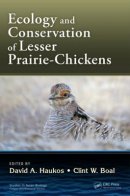
|
|
Booming from the Mists of Nowhere: The Story of the Greater Prairie-ChickenGreg Hoch
Bur Oak Books
University Of Iowa Press
2015
"For ten months of the year, the prairie chicken’s drab colors allow it to disappear into the landscape. However, in April and May this grouse is one of the most outrageously flamboyant birds in North America. Competing with each other for the attention of females, males gather before dawn in an explosion of sights and sounds—"booming from the mists of nowhere," as Aldo Leopold wrote decades ago. There’s nothing else like it, and it is perilously close to being lost. In this book, ecologist Greg Hoch shows that we can ensure that this iconic bird flourishes once again. Skillfully interweaving lyrical accounts from early settlers, hunters, and pioneer naturalists with recent scientific research on the grouse and its favored grasslands, Hoch reveals that the prairie chicken played a key role in the American settlement of the Midwest. Many hungry pioneers regularly shot and ate the bird, as well as trapping hundreds of thousands, shipping them eastward by the trainload for coastal suppers. As a result of both hunting and habitat loss, the bird’s numbers plummeted to extinction across 90 percent of its original habitat. Iowa, whose tall grass prairies formed the very center of the greater prairie chicken’s range, no longer supports a native population of the bird most symbolic of prairie habitat. The steep decline in the prairie chicken population is one of the great tragedies of twentieth century wildlife management and agricultural practices. However, Hoch gives us reason for optimism."
|
Buy from amazon.co.uk 
|
|
Grouse of the WorldRichard Sale and Roald Popatov
New Holland
2013
"Grouse of the World explores grouse evolution and then look at each of the 19 species, detailing distribution, habitat, plumage, subspecies, breeding, diet and conservation. This is the first comprehensive guide to the grouse family, and it will include many drawings, photographs and maps."
|
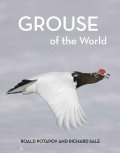
Buy from amazon.com  |
|
Save the Last Dance: A Story of North American Grassland GrouseNoppadol Paothong
Text: Joel Vance
Foreword: Paul Johnsgard
2012
"A new book by award-winning photographer, Noppadol Paothong, and noted outdoor writer, Joel M. Vance, strives to rescue grassland grouse from the brink of extinction by showing the world what it stands to lose if these species are allowed to disappear forever. This 204-page hardbound book, Save the Last Dance – A Story of North American Grassland Grouse, captures the dazzling beauty of seven grouse species whose populations are diminishing across the prairies and plains of America – and one species that has already lost its battle for survival. Fortunately, many conservation groups have championed the cause of grassland grouse. But will it be too little, too late? The birds can be saved if enough people care. The book fosters knowledge and understanding of these spectacular birds and their diminishing habitats so future generations, too, can marvel at their grace and beauty. The book covers the following species: Heath Hen, Greater Prairie-Chicken, Lesser Prairie-Chicken, Attwater's Prairie-Chicken, Greater Sage-Grouse, Gunnison Sage-Grouse, and Sharp-tailed Grouse, along with conservation efforts to save these species."
|
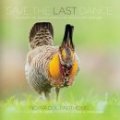 |
|
The Black GrousePatrick Laurie
Merlin Unwin Books
2012
"This is the first book to be written on this fascinating, severely declining species, the Black Grouse. Author Patrick Laurie's lively natural history is interwoven with his account of his on-going battle to reintroduce them on his farm in the Scottish Borders. His beautiful illustrations convey his passion for these vulnerable birds, so full of character, from their aggressive lekking behaviour to their desperate struggle to survive against nearly-impossible odds in modern Britain."
|
Buy from amazon.com 
|
|
Ecology, Conservation, and Management of GrouseEditors: Brett K Sandercock, Kathy Martin and Gernot Segelbacher
Studies In Avian Biology 39
Cooper Ornithological Society
2011
"Grouse - an ecologically important group of birds that include capercaillie, prairie chickens, and ptarmigan - are distributed throughout the forests, grasslands, and tundra of Europe, Asia, and North America. Today, many grouse populations are in decline, and the conservation and management of these charismatic birds is becoming a global concern. This volume summarizes current knowledge of grouse biology in 25 chapters contributed by 80 researchers from field studies around the world. Organized in four sections - Spatial Ecology, Habitat Relationships, Population Biology, and Conservation and Management - the chapters offer important insights into spatial requirements, movements, and demography of grouse. Much of the research employs emerging tools in ecology that span biogeochemistry, molecular genetics, endocrinology, radio-telemetry, and remote sensing. The chapters explore topics including the impacts of climate change, energy development, and harvest, and give new evidence for life-history changes in response to human activities."
|
Buy from amazon.com 
|
|
Greater Sage-Grouse: Ecology and Conservation of a Landscape Species and its HabitatsEditors: S.T. Knick, and J.W. Connelly
Studies In Avian Biology 38
Cooper Ornithological Society
2011
Contents:
- Greater Sage-Grouse and sagebrush: an introduction to the landscape
- Historical development, principal federal legislation, and current management of sagebrush habitats: implications for conservation
- The legal status of Greater Sage-Grouse: organizational structure of planning efforts
- Characteristics and dynamics of Greater Sage-Grouse populations
- Characteristics of Greater Sage-Grouse habitats: a landscape species at micro- and macro scales
- Molecular insights into the biology of Greater Sage-Grouse
- Predation on Greater Sage-Grouse: facts, process, and effects
- Harvest management for Greater Sage-Grouse: a changing paradigm for game bird management
- Parasites and infectious diseases of Greater Sage-Grouse
- West Nile Virus ecology in sagebrush habitat and impacts on Greater Sage-Grouse populations
- Characteristics of sagebrush habitats and limitations to long-term conservation
- Pre-Euro-American and recent fire in sagebrush ecosystems
- Ecological influence and pathways of land use in sagebrush
- Influences of the human footprint on sagebrush landscape patterns: implications for Sage-Grouse conservation
- Influences of free-roaming equids on sagebrush ecosystems, with a focus on Greater Sage-Grouse
- Greater Sage-Grouse population dynamics and probability of persistence
- Connecting pattern and process in Greater Sage-Grouse populations and sagebrush landscapes
- Influences of environmental and anthropogenic features on Greater Sage-Grouse populations, 1997-2007
- Factors associated with extirpation of sage-grouse
- Greater Sage-Grouse as an umbrella species for shrubland passerine birds: a multiscale assessment
- Energy development and conservation tradeoffs: systematic planning for Greater Sage-Grouse in their eastern range
- Response of Greater Sage-Grouse to the Conservation Reserve Program in Washington state
- Restoring and rehabilitating sagebrush habitats
- Conservation of Greater Sage-Grouse: a synthesis of current trends and future management
|
Buy from amazon.com 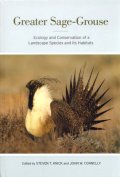
|
|
Gyrfalcons and Ptarmigan in a Changing World, Volume IConference Proceedings: 1-3 February 2011, Boise, Idaho, 2011
Editor: R.T. Watson, T.J. Cade, M. Fuller, G.
Hunt, and E. Potapov
The Peregrine Fund
2011
The Conference Summary which starts this collection of papers was written by Ian Newton.
"The conference brought together experts from around the world to share information and to develop a common purpose toward (1) understanding local, regional, and global factors affecting population dynamics of Gyr falcons, ptarmigan, and other prey, (2) looking for changing patterns of abundance throughout their circumpolar distributions, and (3) establishing a global strategy and plan of action for research and conservation of the sespecies. Invited speakers included world experts on Gyrfalcons, their prey, competitors, and habitat, as well as on climate change and associated alterations in arctic and alpine biotas, contamination, resource extraction,diseases, and other factors influencing the ecosystems in which these species occur." |
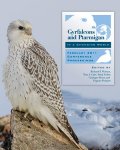 |
|
Grouse of Plains and Mountains: The South Dakota StoryLester D. Flake; John W. Connelly; Thomas R. Kirschenmann; Andrew J. Lindbloom
South Dakota Dept of Game, Fish and Parks
2010
|
Buy from amazon.co.uk 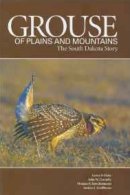
|
|
GrouseAdam Watson & Robert Moss
New Naturalist Series 107
Collins
2008
"Grouse: The Natural History of British and Irish Species covers four of the most emblematic species of our upland regions. Collectively they have the most fascinating life histories of any bird group, individually they have their own stories to tell: the ptarmigan is a resident of our highest mountain areas, the black grouse is famous for its extraordinary mating displays, the capercaillie is one of our largest birds and the red grouse, whilst no-longer one of the few British endemics, is one of the most heavily researched species. All four face similar problems, including habitat loss, predators, pests, disease and food shortage. This is compounded by issues of managed animal populations and controversy surrounding the commercial worth of grouse. This volume in the New Naturalist series, written by two of the world's leading grouse specialists, offers a fascinating insight into the natural history and biology of these birds, including aspects of their behaviour, the historical relevance of their names, the reasons behind population fluctuations and international conservation efforts."
|
Buy from amazon.co.uk 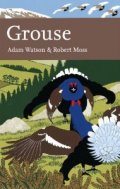
|
|
White-Tailed Ptarmigan: Ghosts of the Alpine TundraJoyce Gillhorn
Photographs: Joyce Gillhorn and Calvin Whitehall
Johnson Books
2007
"Celebrating the white-tailed ptarmigan in a month-by-month photographic essay, White-Tailed Ptarmigan: Ghosts of the Alpine Tundra reveals the elusive habits of the only bird capable of surviving on the harsh, alpine tundra of the Rocky Mountains throughout the year. Packed with great photos of these fascinating birds, the reader will discover an appreciation and awe for the adaptations of a species living on the edge, a species that contends with bitter cold, fierce winter storms and short breeding seasons."
|
Buy from amazon.co.uk 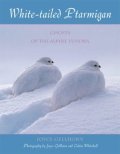
|
|
The Grouse: Artists' Impressions Simon Gudgeon, Ashley Boon, Ben Hoskyns, Terence Lambert, Rodger McPhail, Derek Robertson, Jonathan Sainsbury, Keith Sykes, Owen Williams
Swan Hill Press / Quiller Publishing
2007
"Although predominantly concerned with red grouse, this book also covers the black grouse, capercaillie and ptarmigan. Whilst brief natural history notes for each species are included, the book is first and foremost an insight into how each artist approaches his subject. The paintings and sketches provide a rich tapestry of images that reflect their passion for grouse."
|
Buy from amazon.co.uk 
|
|
A Pilot Study to Test the Efficacy of Field Methods for Wide Scale Monitoring of Ptarmigan in ScotlandJohn Calladine
British Trust For Ornithology (Research Report No 423)
2005
"This report describes a pilot study to test the efficacy of simple methods for assessing temporal and spatial variation in the abundance of Ptarmigan in Scotland. The methods aimed to be suitable for general hill users, who do not necessarily have specialist bird knowledge or previous experience of quantitative ornithological surveys." From BTO Abstract.
|
Buy from amazon.co.uk 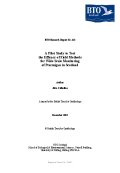
|
|
Svalbard Rock Ptarmigan (Lagopus mutus hyperboreus): A Status ReportÅshild Ønvik Pedersen, Øystein Overrein, Sigmund Unander and Eva Fuglei
NPI Report Series 125
Norsk Polarinstitutt
2005
From the report summary: "The Svalbard rock ptarmigan (Lagopus mutus
hyperboreus) is the only resident terrestrial bird in Svalbard. The ptarmigan is also by far the most important small game species for hunting in Svalbard. Research performed to date on the Svalbard rock ptarmigan has mainly been physiological studies focusing on adaptations to Arctic conditions. Current ecological knowledge is limited and available information focuses mainly on breeding biology including behavioure aspects of breeding and social ecology."
|
 |
|
Blue Grouse: Their Biology and Natural HistoryFred C Zwickel and James F Bendell
NRC Research Press
2003
A study of the Blue Grouse. Subjects covered include taxonomy, evolution, habitat, morphology, reproduction, food, individual and collective behaviour, principal population parameters, predators and diseases.
|
Buy from amazon.co.uk 
|
|
Caucasian Black Grouse
Georgian Center for the Conservation of Wildlife
2003
"The book describes the endemic and globally threatened bird by providing comprehensive information on species biology, behaviour, ecology, distribution, threats and conservation measures, and also on organizations involved in research and conservation of this species across the Caucasus region and internationally."
|
Buy from amazon.co.uk 
|
|
Pheasants, Partridges and Grouse: Including Buttonquails, Sandgrouse and their AlliesSteve Madge and Phil MacGowan
Illustrations: Norman Arlott, Robin Budden, Daniel Cole, John Cox, Carl D'Silva, Kim Franklin and David Mead
Helm
2002
"A comprehensive guide to over 250 species of pheasants, partridges, quails, grouse, turkeys, guineafowl, buttonquails and sandgrouse. This book is primarily an identification guide focusing on identification details and description. The text provides information on identification, description, geographical variation, voice, status, habitat and behavior, distribution, movements and conservation issues. 72 color plates show male, female, juvenile, and subspecies plumages. There is a colour distribution map for each species. A glossary and bibliography are provided."
|
Buy from amazon.co.uk 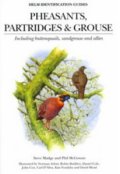
|
|
Pheasants, Partridges and Grouse: Including Buttonquails, Sandgrouse and their AlliesSteve Madge and Phil MacGowan
Illustrations: Norman Arlott, Robin Budden, Daniel Cole, John Cox, Carl D'Silva, Kim Franklin and David Mead
Princeton University Press
2002
"This guide brings together, for the first time within a single volume, a comprehensive review of all the world's pheasants, partridges, quails, grouse, turkeys, guineafowl, buttonquails, sandgrouse, and the enigmatic Plains-wanderer - over 250 species in all. The group includes some of the world's most familiar and beautiful birds, such as the Indian peafowl and the stunning tragopans, as well as some of the rarest and most threatened. This book concentrates on detailed identification and distribution, but also highlights conservation issues where relevant. The seventy-two color plates, by leading bird illustrators, show male, female, juvenile, and subspecies plumages, and form the finest set of illustrations of these birds to date. There is also a color distribution map for each species."
|
Buy from amazon.co.uk 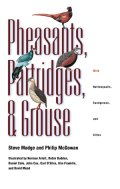
|
|
Grassland Grouse And Their ConservationPaul A. Johnsgard
Smithsonian Institution
2002
Grassland Grouse is a call to action from one of the world's leading ornithologists. Conservationists have seen a marked decline in the populations of North American grouse, particularly the grassland-adapted species. Unless action is taken swiftly, at least one species is certain to follow the heath hen into extinction. Johnsgard discusses places where populations exist that have yet to be preserved, and outlines the steps necessary to conserve these species. A possible future does exist for grassland grouse, and Johnsgard's book points the way toward securing it.
|
Buy from amazon.co.uk 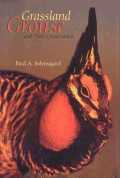
|
|
Grouse: Status Survey and Conservation Action Plan, 2000-2004Ilse Storch
IUCN - The World Conservation Union
2002
A guide to the distribution, status, and threats to all grouse species. The major objective of the report is to identify conservation priorities from a global perspective.
|
Buy from amazon.co.uk 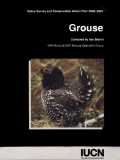
|
|
Ruffed Grouse: Woodland DrummerMichael Furtman
Stackpole Books
2000
This work explores the habitat, diet, social structure and life cycle of the bird, covering all subspecies and close relatives including the ptarmigan, sharp-tailed grouse, pinnated gouse, blue grouse, and spruce grouse.
|
Buy from amazon.co.uk 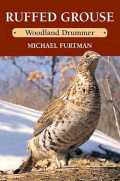
|
|
Birds of Prey and Red GrouseS.M. Redpath and S.J. Thirgood
Stationery Office Books
1997
The relationship between birds of prey and red grouse, the former of conservaton interest and the latter of economic importance, is central to the management of many upland estates. This text describes the results of a study which examined the impact of raptor predation on red grouse numbers. The study was based at Langholm, south-west Scotland, but was extended in part to five other moors elsewhere in Scotland. The research was sponsored by sponsored by the Buccleuch Estates, Peter Buckley of Westerhall Estate, The Game Conservancy Trust, The Game Conservancy Scottish Research Trust, Centre for Ecology & Hydrology, Joint Nature Conservation Committee, Royal Society for the Protection of Birds, and Scottish Natural Heritage.
|
Buy from amazon.co.uk 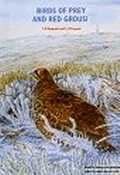
|
|
Abundance and Distribution of Capercaillie in Scotland 1992-94D. Catt
Scottish Natural Heritage
1997
A 32 page report.
|
Buy from amazon.co.uk 
|
|
Manual Of Red Grouse and Moorland ManagementPeter J. Hudson and David Newborn
Game Conservancy
1995
|
Buy from amazon.co.uk 
|
|
Arena Birds: Sexual Selection and BehaviorPaul A. Johnsgard
Smithsonian Institution Press
1994
"Arena birds - those birds whose mates gather for competitive sexual display in open spaces called arenas or leks - are amoung the most beautiful birds in the world. Paul Johnsgard surveys the mating behavior of many species and groups and explains how arena birds select mates on the basis of either male dominance or female choice."
|
Buy from amazon.co.uk 
|
|
Management of Forests for Capercaillie in ScotlandRobert Moss and Nicholas Picozzi
Forestry Commission
1994
This publication describes the biology and status of capercaillie in Scotland, discusses possible reasons for the decline in their numbers, and gives recommendations for managing forests for capercaillie.
|
Buy from amazon.co.uk 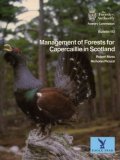
|
|
Black Grouse And Forestry: Habitat Requirements And ManagementJohn T Cayford
Forestry Commission Technical Paper
1993
This report provides a description of the species, current distribution, status, and habitat requirements, and recommends beneficial forestry management practices.
|
Buy from amazon.co.uk 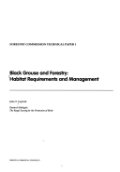
|
|
Tetraonidae and Phasianidae of the USSR: Ecology and MorphologyM.A. Kuz'mina
Smithsonian Institution
1992
This book reviews the ecological and morphological adaptations of Tetraonidae and Phasianidae of the Soviet Union, based on data available in the literature and many years of research by the author. The distribution, habitat, behavior, feeding habits, and the adaptation of these birds to climatic conditions are discussed in the first part. The second part of the book elucidates the structure of the locomotory organs and locomotion. The final chapter examines the ecological groups of galliform birds and suggests measures for conserving and increasing the numbers of some species of this economically important group of birds.
|
Buy from amazon.co.uk 
|
|
Grouse in Space and Time: The Population of Managed GamebirdPeter J. Hudson
Game Conservancy Trust
1990
A report resulting from the Scottish Grouse Research Project which was started by The Game Conservancy Trust to try to understand the drop in grouse populations from the late 1970's onward and to try to reverse the decline in Scotland.
|
Buy from amazon.co.uk 
|
|
Red Grouse Populations and Moorland ManagementEditor: J.H. Lawton
Ecological Issues No. 2
British Ecological Society
Field Studies Council
1990
|
Buy from amazon.co.uk 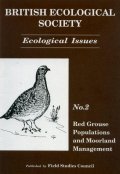
|
|
The Ruffed GrouseSally Atwater, and Judith Schnell
Stackpole Books
1989
Provides detailed information on the characteristics, behavior, life cycle, and habitat of ruffed grouse.
|
Buy from amazon.co.uk 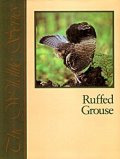
|
|
The Ruffed GrouseGordon Gullion
Photographs: Tom Martinson
Northword Press
1989
|
Buy from amazon.co.uk 
|
|
Adaptive Strategies and Population Ecology of Northern Grouse, Vol. 1: Population StudiesEditors: Arthur T. Bergerud and Michael W. Gratson
University of Minnesota Press
1988
The first volume contains eleven studies of eight grouse species; the second contains primarily the work of Bergerud, which utilizes the evidence in the first volume to advance theories of behavior and offer new demographic insights
|
Buy from amazon.co.uk 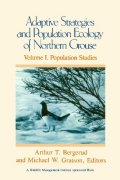
|
|
Adaptive Strategies and Population Ecology of Northern Grouse, Vol. 2: Theory & SynthesisArthur T. Bergurud
University of Minnesota Press
1988
The first volume contains eleven studies of eight grouse species; the second contains primarily the work of Bergerud, which utilizes the evidence in the first volume to advance theories of behavior and offer new demographic insights
|
Buy from amazon.co.uk 
|
|
Ruffed Grouse Management: State of the Art in the Early 1980'sWilliam L. Robinson
North Central Section of the Wildlife Society / Ruffed Grouse Society
1984
Proceedings of a symposium held at the 45th Midwest Fish and Wildlife Conference, St. Louis, Missouri, 5-7 December, 1983.
|
Buy from amazon.co.uk 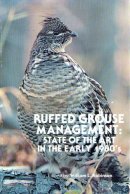
|
|
Grouse of the WorldPaul A. Johnsgard
University of Nebraska Press / Christopher Helm
1983
A study of all the 16 species of grouse, capercaillies and ptarmigans of the world, including their comparative biology and individual life histories. Includes an extensive bibliography, 51 color plates 15 maps and 34 drawings by the author.
|
Buy from amazon.co.uk 
|
|
Fool Hen: The Spruce Grouse on the Yellow Dog PlainsWilliam L. Robinson
University of Wisconsin Press
1980
|
Buy from amazon.co.uk 
|
|
The Ruffed Grouse in OntarioBlair J.Dawson
Ministry of Natural Resources
1976
|
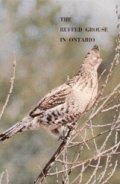 |
|
Grouse and Quails of North AmericaPaul A. Johnsgard
University of Nebraska Press
1973
A study of the 23 native species of grouse and quails occurring north of Guatemala in North America, plus two introduced partridges. An identification key and bibliography are included. Includes 52 colour plates, 88 monochrome photographs and other maps and drawings.
|
Buy from amazon.co.uk 
|
|
The Capercaillie
C.E. Palmar
Forestry Commission Leaflet 37
Forestry Commission
2nd edition
1972
A 16 page Forestry Commission booklet. Probably reprinted a number of times.
|
Buy from amazon.co.uk 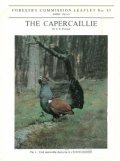
|
|
The Living BirdNinth Annual
The Laboratory of Ornithology
Cornell University
1970
Contents:
- A Study Of Nesting Torrent Ducks In The Andes - George M Moffett, Jr
- Displays Of Four Species Of Blue-Winged Ducks - Frank McKinney
- The Shoulder-Spot Display Of Grouse - H G Lumsden
- Orientation In Gulls: Effect Of Distance, Direction Of Release And Wind - William E Southern
- Breeding Behavior Of The Sanderling In The Canadian High Arctic - David F Parmelee
- The Scarlet Ibis in Surinam and Trinidad - Richard P ffrench and F Haverschmidt
- Breeding Behavior Of The Rock Ptamigan - S D MacDonald
- The Eastern Bluebird: Its Breeding Season, Clutch Size And Nesting Success - David B Peakall
- A Photographic Study Of The Potoo In Colombia - Jose Ignacio Borrero H.
- Life history of the Common Potoo - Alexander F Skutch
Illustrations by: Robert Gillmor, R A Richardson, Albert Earl Gilbert, Keith Shackleton, Tony Angell, J H Czech, George Miksch Sutton, John Henry Dick, Paul Barruel, F Haverschmidt, John Crosby, and William Zimmerman
|
Buy from amazon.co.uk 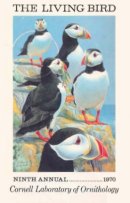
|
|
The Capercaillie
C.E. Palmar
Forestry Commission Leaflet 37
Forestry Commission
1965
A 12 page Forestry Commission booklet. Probably reprinted a number of times.
|
 |
|
The Ruffed Grouse: Life History & Propogation & ManagementGardiner Bump, Robert W. Darrow, Frank C. Edminster and Walter F. Crissey
New York State Department of Conservation
1947
912 pages with many black and white photograps.
|
Buy from amazon.co.uk 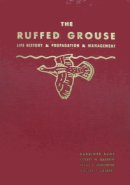
|
|
Attwater's Prairie Chicken: Its Life History And Management
Valgene W. Lehmann
1 color plate: Allan Brooks
North American Fauna, Number 57
Fish And Wildlife Service
US Department Of The Interior
1941
From the abstract: Attwater's Prairie Chicken, a characteristic bird of the Texas coastal prairie, is closely related to the now extinct heath-hen of northeastern North America. Once abundant in an area extending from the coastal tall-grass prairies of southwestern Louisiana and Texas west and south to near Port Isabel, it has decreased in numbers as man has exploited its habitat, until now it is threatened with the same fate as that of the heath-hen. Important factors limiting the numbers of the bird include excessive or persistent rainfall during the nesting season, heavy grazing, excessive pasture burning, agricultural operations, and overshooting. Management will usually involve protection from excessive killing, improvement of food and cover, and control of predators and of the kill by hunters. Responsibility for this rests with the landowner. Optimum prairie chicken range apparently consists of well-drained grassland, with some weeds or shrubs, the cover varying in density from light to heavy; and with surface water available in summer; diversification within the grassland type is essential. In the absence of ample refuges for the species, probably all other favorable factors together will fail to save Attwater's prairie chicken from extinction.
|
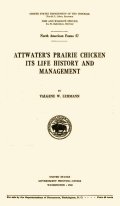
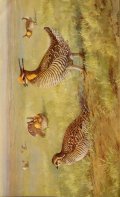 |
|
A Study Of The Sharp-Tailed GrouseL.L. Snyder
Contributions No. 6
Royal Ontario Museum of Zoology
1935
From the introduction: "When it became evident in the fall of 1932 that a southward emigration of sharp-tailed grouse was taking place in parts of northern Ontario and Quebec, the Royal Ontario Museum of Zoology undertook the gathering of facts relative to the population involved and on the status of sharp-tailed grouse in general. A questionnaire was circulated among correspondents and observers distributed throughout Canada who kindly co-operated by contributing a rather extensive record of observations. The compilation of this record gave a very satisfactory account of the numbers, distribution, habits, and behaviour of these northern grouse during their southward movement in the fall and winter of 1932-3, and a general idea as to the status of the species as a whole in Canada. To allow for the incorporation of some remarks on the aftermath of the emigration of northern sharp-tailed grouse in the east, a report on the subject was delayed and a later questionnaire distributed the following year. This second questionnaire was directed toward the status of the species, more particularly the emigrants, during the spring, summer, and fall of 1933. The circulation of questionnaires constitutes a survey which cannot be accomplished in any other way. The Museum wishes to thank the correspondents who have co- operated, collectively, since the large number of persons concerned prevents individual acknowledgements here."
|
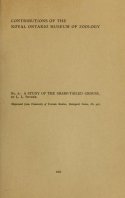
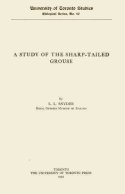
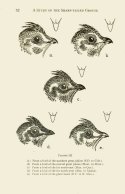 |
|
The Heath Hen
Alfred O. Gross
Boston Society of Natural History
1928
|
 |
|
The Natural History Of British Game Birds
J.G. Milais
Plates: J.G. Millais, Archibald Thorburn
Longmans Green & Co
1909
From the introduction: "The Natural History of the British Surface-feeding Ducks was so successful that I have been encouraged to produce the present work on Game Birds on similar lines, but I trust with superior reproductions. Our birds of the chase are a subject of perennial interest both to sportsmen and naturalists, and I have endeavoured to bring all that is known about them up to date, as well as to add much fresh material regarding the habits, plumages, hybrids, and varieties of a group of which I have made a special study for many years. Again I have had the great assistance of my friend Mr. Archibald Thorburn, whose work amongst his particular family of birds needs no eulogy on my part. It is sufficient to say that his paintings of gallinaceous birds have never been, nor are likely to be, surpassed in our generation."
|


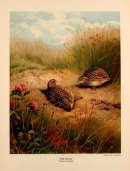
|
|
The Grouse And Wild Turkeys Of The United States, And Their Economic Value
Sylvester D. Judd
Color frontispiece and 1 b/w plate: Louis Agassiz Fuertes
Division Of Biological Survey Bulletin No. 24
US Department of Agriculture
Government Printing Office
1905
From the introduction: From the earliest settlement of the country to the present time these game birds have been of great economic consequence. Their value as food was early recognized, and they played an important role by furnishing the pioneers with no small part of their fare. When found by the Spaniards domesticated among the Indians of Mexico, the importance of the turkey was at once perceived, and the bird was soon carried all over the world. It is only in comparatively recent times, how- ever, that the economic value of grouse and turkeys as insect destroyers has been recognized. The results of the present investigations should lead to a wider knowledge of the essential part these birds play in checking the increase of noxious weeds and insects and the importance of preserving them and of increasing their numbers.
|

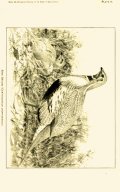 |
|
Upland Game BirdsEdwin Sandys and T.S. Van Dyke
Illustrations: L.A. Fuertes, A.B. Frost, J.O. Nugent, C.L. Bull
The Macmillan Company
1902
Opening lines: Despite the leagues of virgin paper and gallons of ink which have been wedded to produce the story and the glory of the shooting of the American "quail," the interesting fact remains - there's no such bird. If at the time of this writing there be true quail alive and free in the United States of America, either the birds or their immediate ancestors have been imported. The quail of the Bible story, the heaven-sent meat to the famished, was a true quail, but the bird is not a native of this country. And, in passing, it may not be out of place to remark that latter-day scientific knowledge only sustains, as it does in so many other instances, the absolute truth of the ancient record. Under conditions likely to prevail at a certain season of any year, great flocks of migrating quail not only might, but probably would, act as did their ancestors in days of old.
|
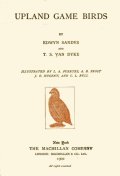
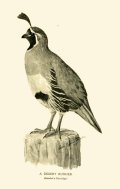
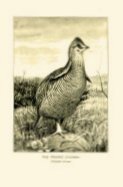 |
|
The Gallinaceous Game Birds of North AmericaDaniel Giraud Elliot
Illustrations: Edwin Sheppard
Francis P. Harper
1897
From the preface: "The construction of the present volume is precisely similar to that of the "Shore Birds," and first is given the common name of each bird, or, if there are more than one, that most generally employed. Then follows an account of the habits and economy of the species, and a short life history; after which comes the Latin name succeeded by the geographical distribution, and a description of both sexes when necessary, and of the young whenever possible. In the Appendix will be found the Keys to the Families, Subfamilies, Genera, and Species, arranged in the same simple manner as those published in the "Shore Birds," and which will enable anyone with a little patience to ascertain to what species an unfamiliar example may belong. Excepting perhaps the Ptarmigan, the various species of gallinaceous birds are more easily recognized from each other, in illustrations printed only in black and white, than are those of the "Shore Birds," and the various Keys will be found perhaps less necessary, and only really required in the cases of the group above mentioned, or in closely allied species of Prairie Grouse. The author's experience among the game birds has been very extensive, gained from a familiar acquaintance with them in their haunts extending over many years. With a few exceptions, he has observed all the species contained in this book in the various localities they frequent throughout North America, and in the proper season representatives of most of them have fallen to his gun. Unlike the majority of the "Shore Birds," omitting a few species and those mainly among the Ptarmigan, Partridges and Grouse breed within the limits of the United States, and their habits in the nesting season can be observed by anyone who may be suffciently interested to visit those parts of our country in which the birds are to be found." |
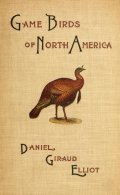
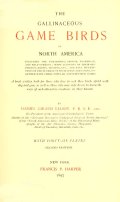
 |
|
Catalogue Of The Game Birds (Pterocletes, Gallinae, Opisthocomi, Hemipodii) In The Collection Of The British MuseumCatalogue Of The Birds In The British Museum, Volume XXII
W.R. Ogilvie-Grant
Colour plates: J.G. Keulemans (4), J. Smit (4)
Printed By Order Of The Trustees
Sold by: Longman & Co.; B. Quaritch; Kegan Paul, Trench, Trubner & Co.; and at the British Museum (Natural History)
1893
Preface: "The present volume treats of four Orders of Birds, constituting the greater bulk of what are commonly termed Game Birds. The numbers of species described and of specimens at present in the Collection are as follows: Pterocletes, 17; Gallinie, 384; Opisthocomi, 1; Hemipodii, 24. In the first category those forms are included to which, in the author's opinion, no higher than subspecific rank should be assigned; only 23 of these species and subspecies are still unrepresented in the Collection. Beside the 102 types of recognized species the Collection contains 50 other typical specimens which are now considered identical with previously named species."
|

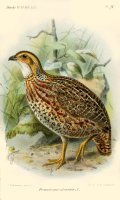
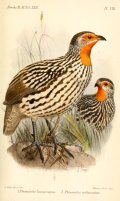 |
|
The Capercaillie in ScotlandJ.A. Harvie-Brown
David Douglas
1888
From the introduction: "In the autumn of 1877, Professor Newton of Cambridge intimated to me that he desired to have some account of the increase and extension of range of the Capercaillie in Scotland. Although possessing a fairly accurate conception of its general distribution, and the lines of its advance outwards from Taymouth, where it was restored in 1837-8, I found that I was wanting in the more minute details which it would be necessary for me to possess before I could furnish a suitable reply. Accordingly, I began inquiries; at first simply with a view to furnishing Professor Newton with a short summary for his new edition of Yarrell's British Birds. But information of such valuable, suggestive, and interesting kind came to hand, that I soon conceived the project of treating the subject more exhaustively. I reflected, moreover, that, besides being of general interest to the naturalist in this country, the subject might be made illustrative of a great natural law, and of the causes and process of distribution, and the increase in population of a species. I found also that while interesting to the naturalist and sportsman, it might also develop questions of economic value to Scottish or other landed proprietors, and be made to contain many local references interesting to individuals who own Capercaillie- haunted woods and forests. With this view, therefore, I caused to be printed a series of queries touching the points I specially desired statistics and information upon, and by the beginning of 1878, I was engaged in sending out the circulars, receiving answers, and, as far as possible, arranging the results. The final results have far exceeded in interest my most sanguine expectations ; though whether I have succeeded in conveying these results successfully and practically to my readers in the following pages it is for them to judge, not me. In the treatment of the subject I cannot lay any claim to originality, nor am I aware that any previously unknown facts are recorded. The treatment has been forced upon me by the large accumulation of data kindly put at my disposal by my many correspondents in this connection. The general remarks are the outcome of the statistics, and contain, I believe, little or nothing that is not known or believed by some of the landed proprietors and sportsmen in the area of the country inhabited by the species. I have not attempted to give my authority for every statement, where such a large amount of statistics came to hand. Errors no doubt must have crept in in such a compilation, for various reasons, but I believe that I have an authority for every statistic recorded." |
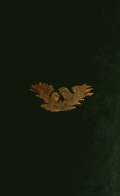
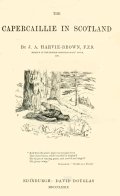 |
|